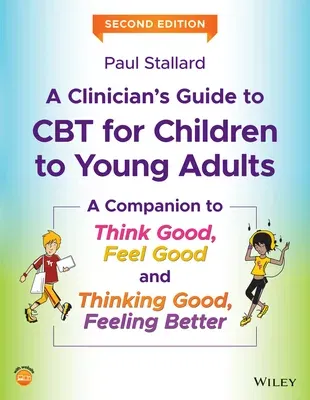A powerful and insightful clinical resource for CBT practitioners who
work with children and young adults
The newly updated and thoroughly revised Second Edition of this
companion to Think Good, Feel Good and Thinking Good, Feeling Better
delivers guidance for clinicians using the author's seminal workbooks.
This companion work builds upon the workbook materials by offering
readers instruction on all aspects of the therapeutic process and a wide
range of case studies highlighting specific therapies in action.
A Clinician's Guide covers topics including parental involvement, key
cognitive distortions in children, formulations, challenging thoughts,
guided discovery, and the use of imagery. The author also includes a
chapter focusing on common potential problems that arise in therapy and
strategies to overcome them.
The book highlights the underlying philosophy, process, and core skills
of employing CBT with children and young people. Readers will appreciate
the competency framework, which describes the CORE philosophy, PRECISE
process, and the ABCs of specific techniques. The book also includes:
- Additional materials and handouts for use in therapy, including
psycho-educational materials for children and parents on common
problems, like depression, OCD, PTSD, and anxiety
- Downloadable, multi-use worksheets for use in the clinician's
therapeutic sessions
- Practical, real-world case examples that shed light on the techniques
and strategies discussed in the book
- A systematic approach to the use of cognitive behavioural therapy to
treat common psychological problems
Perfect for professionals and trainees in child and adolescent mental
health, like psychiatrists, clinical psychologists, educational
psychologists, community psychiatric nurses, and occupational
therapists, the book also belongs on the shelves of non-mental health
professionals, including school nurses and social workers, who regularly
work with children in a therapeutic setting.

